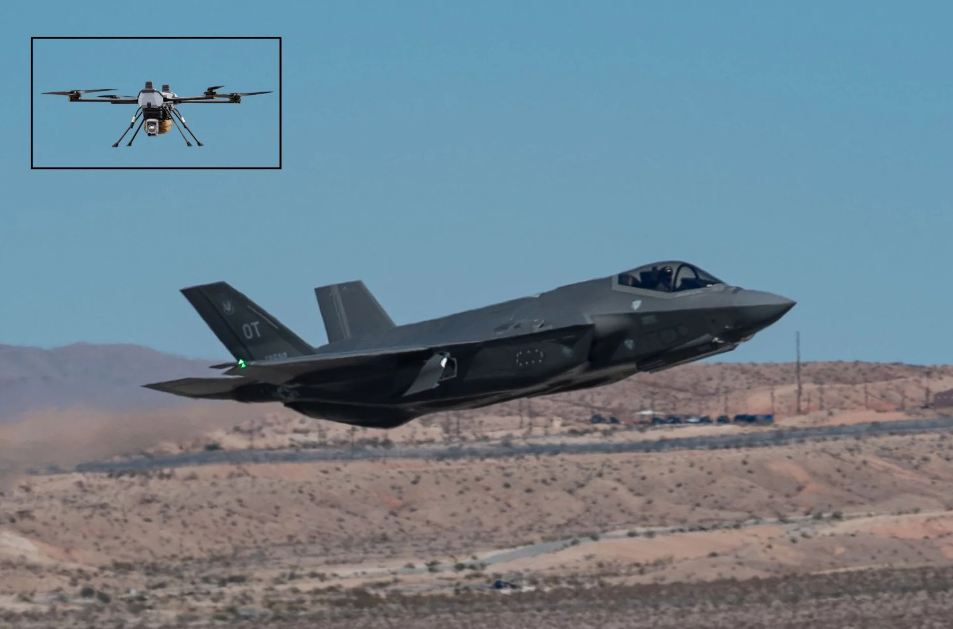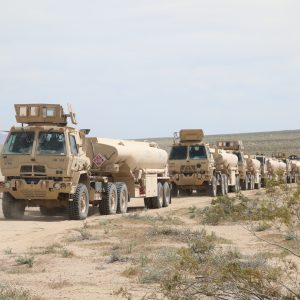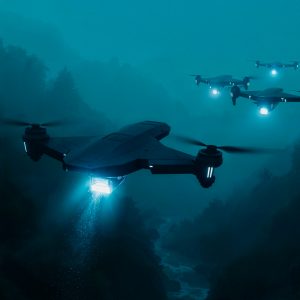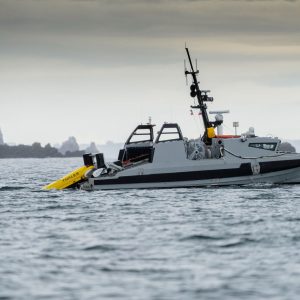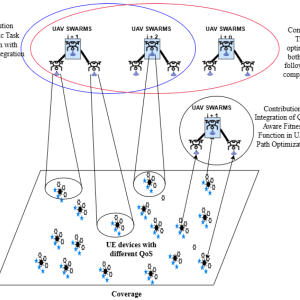On 23 July 2025, Performance Drone Works (PDW) detailed a joint trial with a U.S. Air Force F-35A. The C100 quadcopter used a Leonardo STAG5 laser designator to mark ground targets. Consequently, the fighter released four inert GBU-12 Paveway II bombs that struck with precision.
The Air Force has not issued a public comment. Even so, PDW’s video and notes show a workable concept for stand-off strikes. In brief, the drone lases; the stealth jet stays high and safe.
Key facts from the July demo
PDW reports three designations at 1,000, 1,500, and 2,000 meters. The C100 loitered about 35 minutes and sat roughly 3 km from its operator. As a result, the system kept humans away from the danger area while maintaining guidance quality.
The C100 drone F-35 laser designation approach moved terminal marking off a JTAC and onto an expendable asset. Therefore, the risk profile improved for both the aircrew and the forward team. Moreover, the F-35A preserved low-observable advantages by avoiding low-level lasing runs.
How the teaming works
Sensors and airframe
The STAG5 is a stabilized, multi-sensor gimbal with a coded laser. It provides day/night imaging, ranging, and precise designation. Mounted under the C100, it keeps the laser steady while the quadcopter records impacts for assessment.
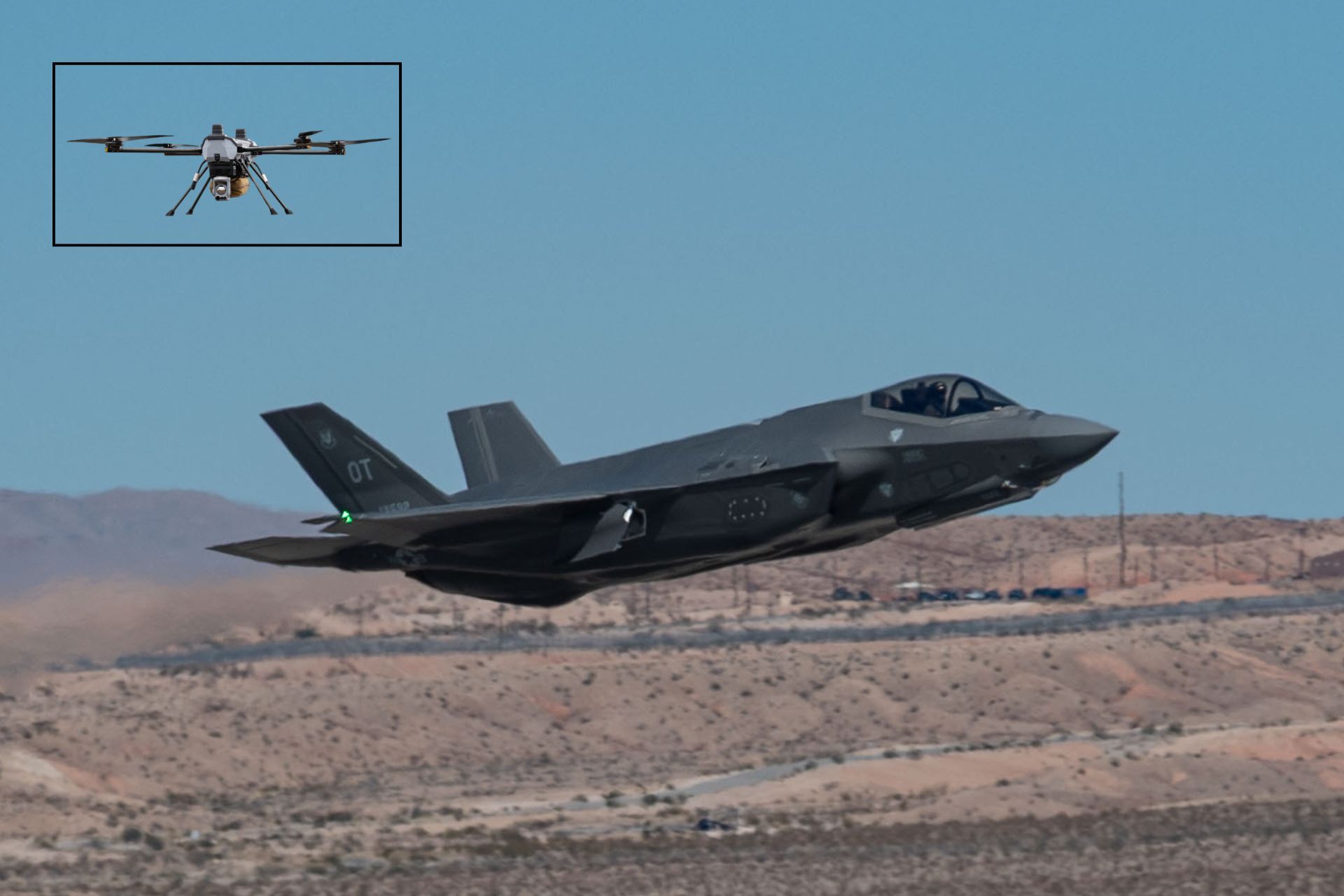
Weapons and release geometry
The GBU-12 adds a Paveway II kit to a 500-lb Mk 82 bomb. Under good conditions, the weapon can reach beyond 14 km. Crucially, continuous lasing supports moving or fleeting targets; GPS-only kits may not.
In this profile, the quadcopter “sparkled” the aimpoint. Meanwhile, the F-35A remained at altitude and released on code. Thus, the jet exploited stealth and stand-off, while the drone handled terminal guidance.
Operational payoffs
JTAC safety and tempo
By shifting terminal lasing to a drone, teams avoid exposure. Consequently, JTACs can command from cover and focus on control and de-confliction. Faster cycles follow because the designator sits closer to the target.
Stand-off flexibility
The C100 drone F-35 laser designation pairing lets the fighter stay outside many short-range threats. It also fits urban or mountainous terrain where sight lines are tight. Therefore, aircrews gain options without calling in a larger designator aircraft.
Cost and scalability
Group-2 drones are relatively low-cost. Hence, units can field several airframes and rotate them. With compliant codes, they can hand off targets to artillery, naval guns, or other aircraft as needed.
What’s different this time?
In 2024, a U.S.–Philippine event used local drones for ISR and relayed coordinates to F-35Bs that dropped JDAMs. Here, the designator itself sits on the drone. Consequently, the team achieved true terminal guidance without another manned lasing platform.
For NATO JTACs, that matters. It adds an “edge lasing” option for coastal, urban, or cluttered terrain. Additionally, it simplifies coordination because the lasing asset and camera share the same platform.
Limits and counter-EW realities
Electronic warfare risks
Small drones depend on data links and GNSS. Adversaries can jam, spoof, or degrade those signals. Therefore, units must plan for link loss and still complete the strike.
Weather and obscurants
Laser energy degrades in smoke, fog, or dust. Moreover, counter-laser sensors may detect or defeat illumination. Commanders must watch conditions and shift methods when required.
Mitigation options
Frequency-agile links, waypoint autonomy, and multiple PRF codes help. Likewise, units can add a second designator or swap to GPS-aided weapons. In short, redundancy keeps the kill chain alive in a contested spectrum.
Adoption path: C100 in Army service
Fielding notes
The U.S. Army’s 173rd Airborne Brigade is buying four C100 systems. The unit also fields custom FPV drones and 3D-printed parts. Together, these tools extend reconnaissance, resupply, and light strike roles.
Official figures list 74 minutes of endurance and a 10 km range. Therefore, units can operate beyond line of sight in rough terrain. During Agile Spirit 25, modular kits supported medical and ammunition drops.
Concept of employment
A platoon can deploy a C100 drone F-35 laser designation kit from a light vehicle. The team establishes a covered observation point and lases on code. Meanwhile, the F-35A remains at altitude and releases from stand-off.
If jamming occurs, the team can switch to a backup link or a second drone. Alternatively, they can hand off to artillery or GPS-guided weapons. Thus, the mission continues despite interference.
Internal Link
For related doctrine and data efforts, see: New Navy–Marine AI and data strategy.
External Source
Primary report and imagery: Army Recognition. Company announcement: PDW. Technical gimbal info: Leonardo STAG5.
Further Reading
- 173rd Airborne’s C100 and FPV integration: Defense.gov
- Background on Paveway II employment and envelopes: The Aviationist
- Comparative case: U.S.–Philippine live-fire with F-35Bs and JDAMs cued by allied drones: USNI News
Want more briefings like this? Subscribe to Defence Agenda’s morning newsletter.

